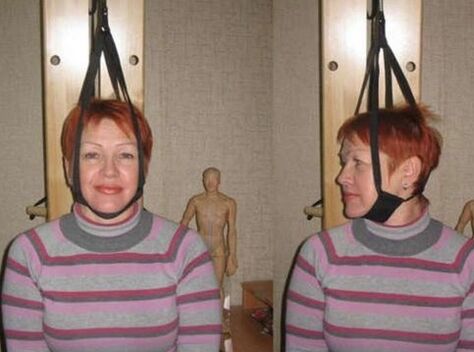Osteochondrosis of the cervical region is a dangerous disease, and if left untreated, you can become a person with disabilities. In the face of this disease, many people think about how to deal with it. Let's understand the complications of the disease.

Cervical back osteochondrosis is a disease that has its symptoms, stages, causes and treatment.
The nature of the disease
The osteochondrosis of the cervical vertebra is a progressive disease, which is characterized by degenerative, as well as dystrophic changes in the discs between the vertebrae.
The cervical department is represented by the seven vertebrae and is more mobile, but the muscle corset is poorly developed. It is responsible for the slopes of the head on the sides and its curves.
The stages of the course of the disease
The development of the disease is done in four stages, and the rate is distinguished:
Photography illustrates the stages of development of osteochondrosis of the cervical spinal canal
Important! At each stage - different symptoms and different methods of treatment are used. Doctors take measures regardless of the stage of the disease, as this allows you to improve the quality of life of the patient.
Causes of the disease
So far, a strong increase in ages diseased from 18 to 30 years has been observed. Previously, this disease was found only in the elderly and occasionally in people under 40. The causes of cervical osteochondrosis are different.
Among the main ones are:
If regular back pain occurs, then this can signal the spine. One of the diseases can be the instability of the cervical vertebrae. What are the causes of the disease and the main symptoms? What complications can be if you do not start treatment on time?
The osteochondrosis of the cervical vertebra is closely associated with muscle spasms that limit the mobility of the vertebrae. As a result, the circulatory process, behavior is violated. All of these factors begin a dystrophic process on discs located between the vertebrae. As a result, the nerve is suppressed.
Incorrect position during sleep can lead to the development of osteochondrosis of the cervical spinal canal
Manifestation of the disease
Most often, signs of cervical osteochondrosis manifestation are associated with the failure of brain blood circulation.
Typical are:

Important! When some symptoms are manifested, consult a doctor for advice. Do not self -medicate.
Symptoms of cervical osteochondrosis
Intervertebral osteochondrosis of the cervical region is manifested by the following symptoms:
With osteochondrosis of the cervical of the spinal canal, the pain is given to the shoulder
Important! If there is an inflammation of the osteochondrosis of the cervical region, then the symptoms are expressed in a brighter form.
Treatment
Osteochondrosis of the cervical spine is treated, but it takes a long time. In addition, it should be done in the hospital and inclusive.
Doctors use a whole range of measures and funds in the fight against the disease. Among them:
Exercises for cervical back osteochondrosis. Simplicity and effectiveness. A systematic approach is required every day
Important! All procedures are prescribed by a physician depending on the degree of the disease and individual characteristics of the patient. They are always selected individually.
The cervical spine in the human body is an important part, and the problems in its work are provoked by negative consequences. Moreover, a neglected neck -related disease can gradually affect the chest region. Exercises for the cervical spinal column will help maintain health and resume mobility in this area of the bone-muscular system.
In addition, the procedures are completed:

Important! Most often, conservative methods are used, but unfortunately, surgical intervention can be described in difficult situations.
Dry explosion - an effective method in treating cervical osteochondrosis of the spinal cervical
The consequences of osteochondrosis of the cervical spinal canal
The disease can cause serious consequences, such as:
Important! Any vascular disorder is the most dangerous consequences, as the supply of the brain with blood is disturbed, which can lead to serious illness.
Osteochondrosis of the cervical spine requires treatment. It takes a long time, so you need to be patient and strictly follow the recommendations and advice of a doctor.
























